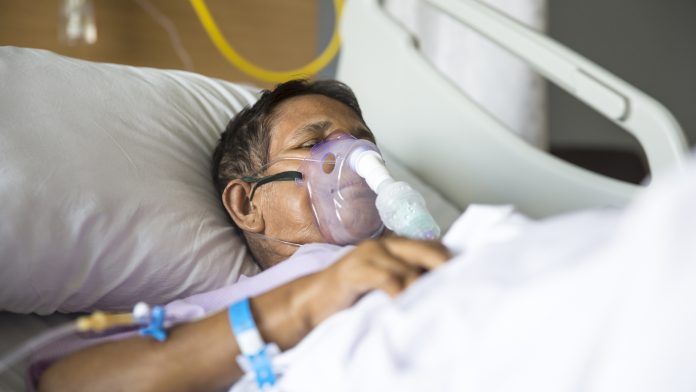
Patients admitted hospitalised with severe breathing difficulties due to COVID-19 are less likely to need breathing apparatus if they lie face down in a prone position.
According to the researchers, lying in a prone position can improve outcomes for patients with breathing difficulties, however, the effects of this approach on mortality and other outcomes remain inconclusive.
The full findings of the study have been published in the BMJ.
Lying prone is standard for critically ill patients
Prone positioning has been used as standard practice in healthcare since the 1970s. This method encourages a larger part of the lung to expand, allowing patients can take bigger breaths.
Prone positioning is usually reserved for critically ill patients who are sedated and intubated. However, in February 2020, reports were published suggesting that the prone positioning of awake patients with COVID-19 may also be helpful. Subsequently, the approach has been widely adopted.
Several studies have been completed since then, examining the effectiveness of prone positioning in awake patients with breathing difficulties, but results have been conflicting.
Researchers then carried out an in-depth analysis of databases for randomised trials comparing awake-prone positioning to standard care for adult patients with COVID-19 hypoxemic respiratory failure.
The researchers found 17 suitable trials involving 2,931 non-intubated patients who were able to breathe without breathing apparatus. Each patient spent an average of 2.8 hours per day lying prone.
The main measure of interest for the researchers was endotracheal intubation (a breathing tube inserted into the windpipe to allow mechanical ventilation). Secondary outcomes included mortality, ventilator-free days, intensive care unit (ICU) and hospital length of stay, change in oxygenation and respiratory rate, and adverse events.
A pooled analysis of High certainty evidence from 14 trials revealed that awake-prone positioning reduced the risk of endotracheal intubation compared with usual care (24.2% with awake-prone positioning v 29.8% with usual care). On average, awake-prone positioning resulted in 55 fewer intubations per 1,000 patients.
Conversely, high certainty evidence from a pooled analysis of 13 trials evaluating mortality did not reveal any notable difference in mortality between the two groups (15.6% with awake-prone positioning v 17.2% with usual care). However, the study may have lacked statistical power to differentiate these differences.
Awake-prone positioning did not significantly affect any of the other secondary outcomes, such as ventilator-free days, ICU or hospital length of stay, based on low and moderate certainty evidence.
Awake-prone positioning can help patients with breathing difficulties
The researchers have acknowledged several limitations in the study. These include a lack of individual patient data, differences between the targeted and achieved duration of awake-prone positioning, and the variation in the definition and reporting of certain outcomes across the various studies.
Further analysis supported these results, leading the researchers to conclude that there is a high probability of benefit for the endotracheal intubation outcome and a low probability of benefit for mortality.
“Awake-prone positioning compared with usual care reduces the risk of endotracheal intubation in adults with hypoxemic respiratory failure due to COVID-19 but probably has little to no effect on mortality or other outcomes,” wrote the researchers.
The researchers have emphasised that the benefits of prone positioning in patients with breathing difficulties may be limited to patients with severe hypoxaemia.
The ideal daily duration of treatment, the level of hypoxaemia that should prompt prone positioning, and how best to improve patient comfort and encourage adherence are all still the subject of debate according to the researchers.
“The pandemic should, however, renew interest and encourage further evaluation of awake prone positioning – an intervention that may benefit a wide range of patients with breathing difficulties,” they concluded.









